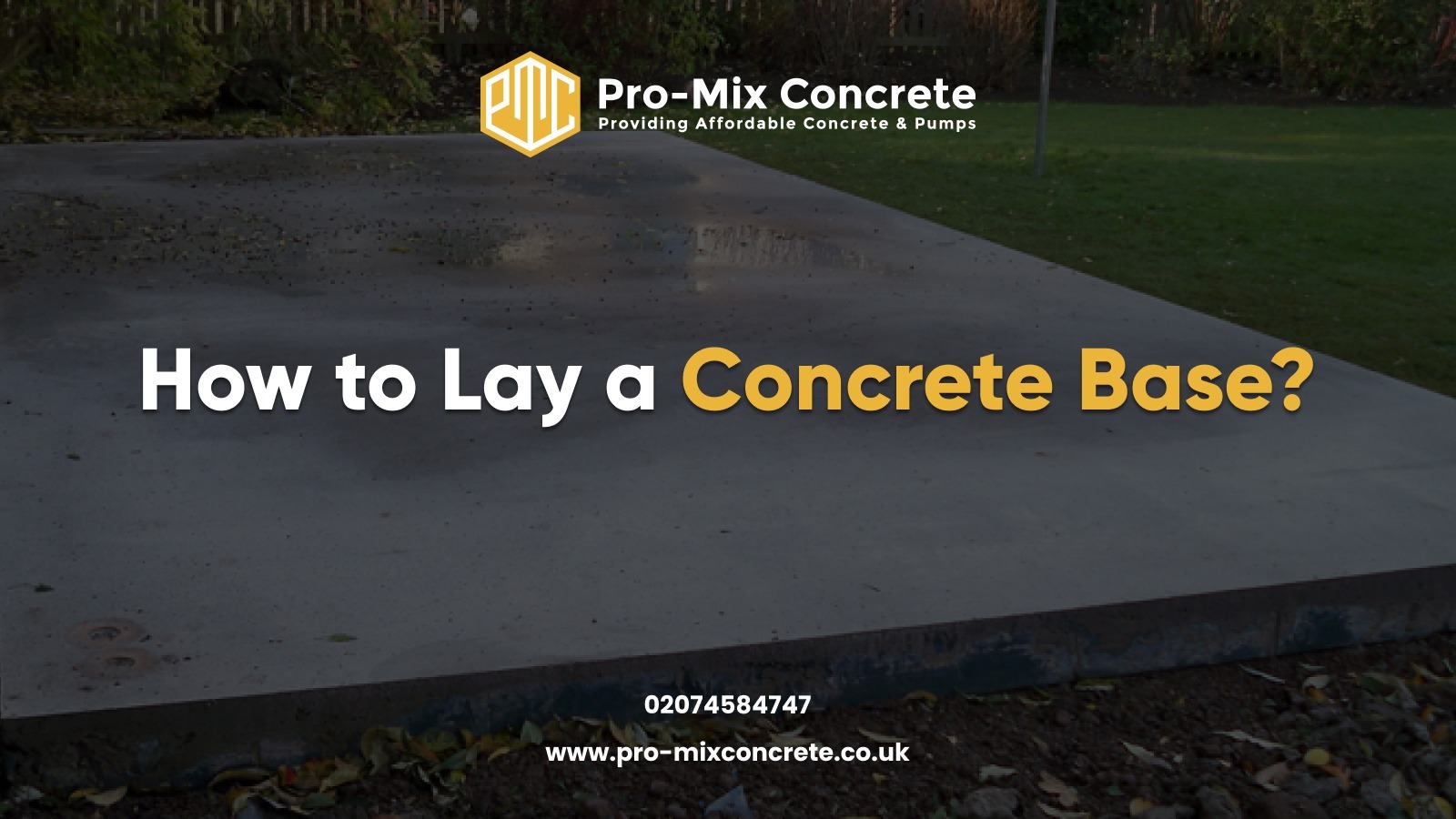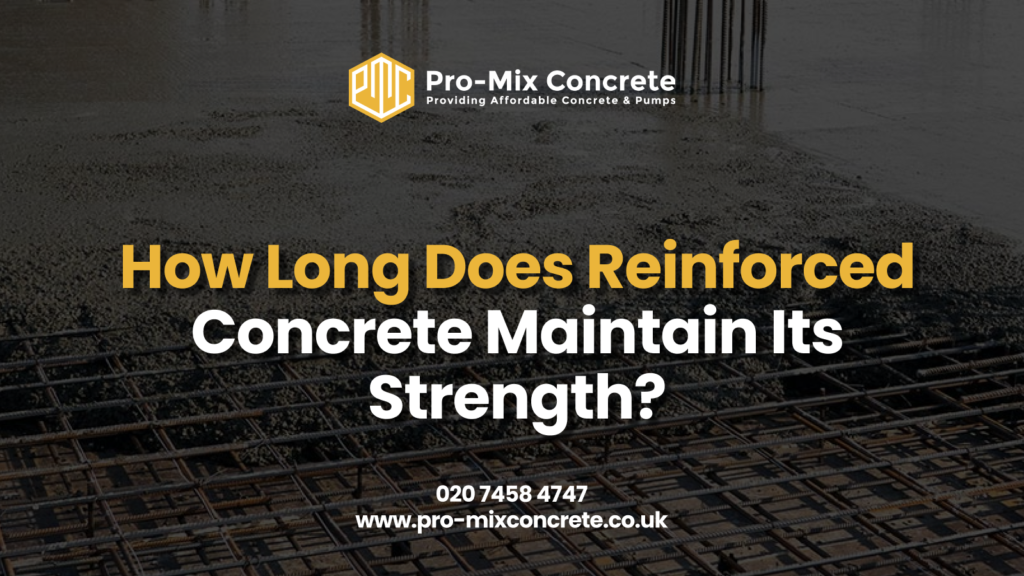Factors to Consider to Lay a Concrete Base
A concrete base is a layer of concrete poured onto a prepared surface, providing a solid foundation for a structure. It distributes the weight evenly, preventing settling or shifting. A properly constructed base is crucial for any construction project, as it provides a stable and level surface on which to build.
|
Factors to Consider |
Details |
|
Intended use of the structure |
Determines the size and depth of the base |
|
Soil conditions |
Determines the type of base needed |
|
Climate |
Determines the thickness of the base |
|
Local building codes and regulations |
Must be followed in determining the size and depth of the base |
|
Manufacturer’s plans or instructions |
Must be followed for specific structures |
Overview of the Steps to Lay a Concrete Base for Construction Projects
- Determine the size and depth of the base according to the intended use of the structure.
- Clear the site of debris, rocks, and vegetation; level and compact the soil for stability.
- Mix cement, sand, and aggregate in the proper proportions; pour the concrete onto the prepared surface; smooth out any bumps and ensure the base is level with a screed; allow the concrete to cure for several days to harden and become strong enough to support the weight of the structure.
Step-by-Step Guide to Laying a Concrete Base
Following these steps will help you achieve professional results with your concrete project, whether for a shed, patio, or other outdoor structure.
1. Planning the Base
Before starting your concrete project, you need to properly plan and prepare:
- Measure the area and calculate how much concrete you’ll need
- Consider the structure’s weight and purpose to determine base thickness
- Check local building codes and manufacturer’s specifications
Mark out the area clearly using stakes and string to create a visual outline of your project. This will help you maintain straight lines and proper dimensions throughout the construction process.
2. Site Preparation
Preparing the site involves clearing the area of any debris, rocks, or vegetation that could interfere with the pouring and curing process. You also need to level and compact the soil using a compacting machine or a plate compactor. This will help ensure that the base is stable and won’t shift or settle over time.
3. Safety Measures
When laying a concrete base, it’s crucial to take the appropriate safety measures to prevent accidents. Wear appropriate footwear, such as sturdy work boots with non-slip soles, to prevent slips and falls.
Use safety equipment such as gloves, safety glasses, and a dust mask to protect yourself from dust, debris, and chemicals. When using tools like a concrete mixer, be sure to follow the manufacturer’s instructions and avoid overloading the machine.
4. Mixing the Concrete
Properly mixed concrete ensures strength and durability:
- Use the right proportions of cement, sand, and aggregate (typically 1:2:4)
- Add water gradually until you achieve a thick, workable consistency
- Mix thoroughly to eliminate dry spots and ensure uniformity
- For larger projects, consider ordering ready-mixed concrete
5. Pouring the Concrete
With the concrete mixed, pour it onto the prepared surface. Start by pouring a small amount of concrete onto the ground, then spread it evenly using a shovel or rake. Continue pouring and spreading the concrete until the entire base is covered, ensuring that it reaches all corners and edges.
6. Smoothing and Levelling
Creating a level surface is crucial for your concrete base:
- Use a screed board across the top of your formwork to level the surface
- Move in a sawing motion to remove excess concrete
- Check the level frequently with a spirit level
- Fix low spots immediately by adding more concrete
7. Curing
After the concrete is smoothed and levelled, allow it to cure for several days. Curing is the process by which the concrete hardens and becomes strong enough to support the weight of your structure. During this time, it’s important to keep the concrete moist by covering it with a plastic sheet or wet burlap. This will help prevent cracking and ensure a strong, durable base.
8. Troubleshooting Common Problems
Be prepared to address common issues:
- For cracks, use concrete filler or sealer appropriate for the size
- For uneven settling, you may need to add concrete to low areas
- Prevent future problems by ensuring proper drainage around the base
- Consider adding reinforcement for larger slabs to prevent cracking
9. Finishing
Once the concrete is fully cured, smooth and finish the surface using a trowel or power float. A trowel is a flat metal tool used to smooth out the surface of the concrete, while a power float is a machine used to create a smooth, even finish. Be sure to wear protective gear, such as gloves and safety glasses, when using these tools.
Insider Tips for Laying a Concrete Base:
- Always use high-quality materials to ensure the strength and durability of your concrete base.
- Use a compacting machine or a plate compactor to level and compact the soil.
- Keep the concrete moist by covering it with a plastic sheet or wet burlap during the curing process to prevent cracking.
- Wear appropriate safety gear, such as footwear, gloves, safety glasses, and a dust mask, when working with concrete.
Case Study: Preparing a Concrete Base for a Garden Shed
How to Lay a Concrete Base: A Real-Life Success Story
Sarah’s backyard garden shed project demonstrates how proper planning and execution can lead to excellent results when creating a concrete foundation.
The Challenge
Sarah needed a sturdy foundation for her new 10′ × 8′ garden shed that would withstand seasonal changes and properly support the structure.
Her Approach
- Planning: Sarah carefully measured her shed dimensions and added extra inches on each side for proper support.
- Site preparation: She dug down 6 inches, removed all vegetation and debris, and thoroughly compacted the soil.
- Gathering materials: She collected everything ahead of time: cement, sand, aggregate, water, plus essential tools including a mixer, wheelbarrow, and shovels.
The Construction Process
Sarah followed the proper techniques:
- She mixed the concrete according to package instructions, gradually adding water until reaching the perfect consistency
- Working methodically, she poured the concrete and spread it evenly across the prepared area
- Using a screed board, she carefully leveled the surface, checking frequently with a spirit level
- Throughout the curing process, she kept the concrete moist using a sprinkler system
The Results
After allowing proper curing time, Sarah finished with a smoothing trowel to create a professional-looking surface. Two years later, her shed remains perfectly level with no signs of cracking or settling—proof that following proper concrete base techniques pays off in the long run!
Bottom Line
Laying a concrete base is an essential step in any construction project. By following the steps outlined in this article and taking appropriate safety measures, you can ensure that your base is strong, durable, and able to support the weight of your structure. Remember to plan the base carefully, prepare the site thoroughly, use high-quality materials, and allow the concrete to cure properly.
For reliable, high-quality concrete solutions, choose Pro Mix Concrete London – Your foundation for success! With over 25 years of industry experience, our expert team delivers premium ready-mix concrete for projects of any size.
Contact us today for a free quote and discover why builders across London trust Pro-Mix Concrete for their concrete needs.
Frequently Asked Questions
To lay a concrete base, first plan and mark your area, prepare the site by removing debris and compacting the soil, add a sub-base layer, construct formwork, mix concrete in the right proportions, pour and spread evenly, level with a screed board, allow proper curing time, and finish the surface as desired.
While concrete typically sets within 24-48 hours, it’s best to wait at least 7 days before placing light structures on it. For maximum strength, allow a full 28-day curing period before placing heavy loads on your concrete base.
For small domestic projects like garden sheds, planning permission is usually not required. However, regulations vary by location, so check with your local building authority, especially for larger bases or if your property has restrictions.
Laying concrete in temperatures below 5°C (41°F) is not recommended as freezing conditions prevent proper curing. If you must pour in cold weather, use specialised cold-weather concrete additives, insulate the area, and protect the fresh concrete from freezing for at least 48 hours.
- Dennis Broderick
- Dennis Broderick is the founder and owner of Pro-Mix Concrete Company, a trusted name in ready-mix concrete solutions across the UK. With over 20 years of hands-on experience in the construction and concrete industry, Dennis brings unmatched expertise, practical insights, and a commitment to quality on every project - from residential driveways to large-scale commercial developments.
 BlogDecember 22, 2025Guide To Concrete Finishes: 9 Different Types of Finishes
BlogDecember 22, 2025Guide To Concrete Finishes: 9 Different Types of Finishes BlogDecember 15, 2025Tips to Hire Concrete Pumps in London
BlogDecember 15, 2025Tips to Hire Concrete Pumps in London BlogDecember 12, 2025How Long Does Reinforced Concrete Maintain Its Strength?
BlogDecember 12, 2025How Long Does Reinforced Concrete Maintain Its Strength? BlogDecember 10, 2025Is Ready Mix Concrete As Good As Hand Casting?
BlogDecember 10, 2025Is Ready Mix Concrete As Good As Hand Casting?





